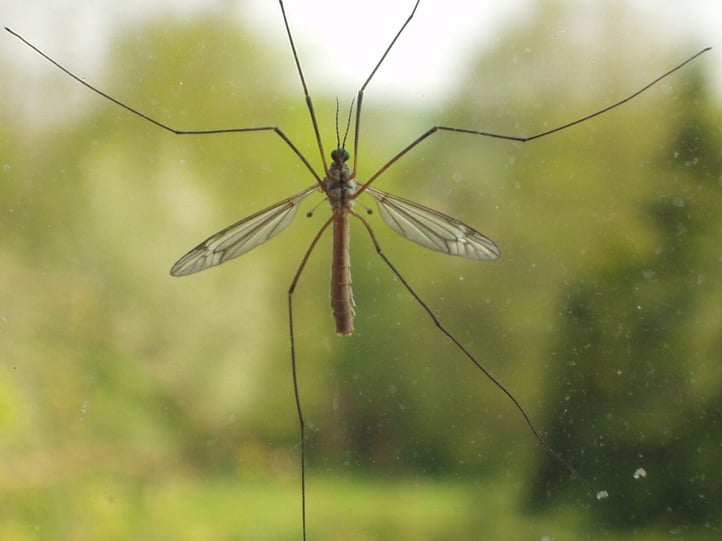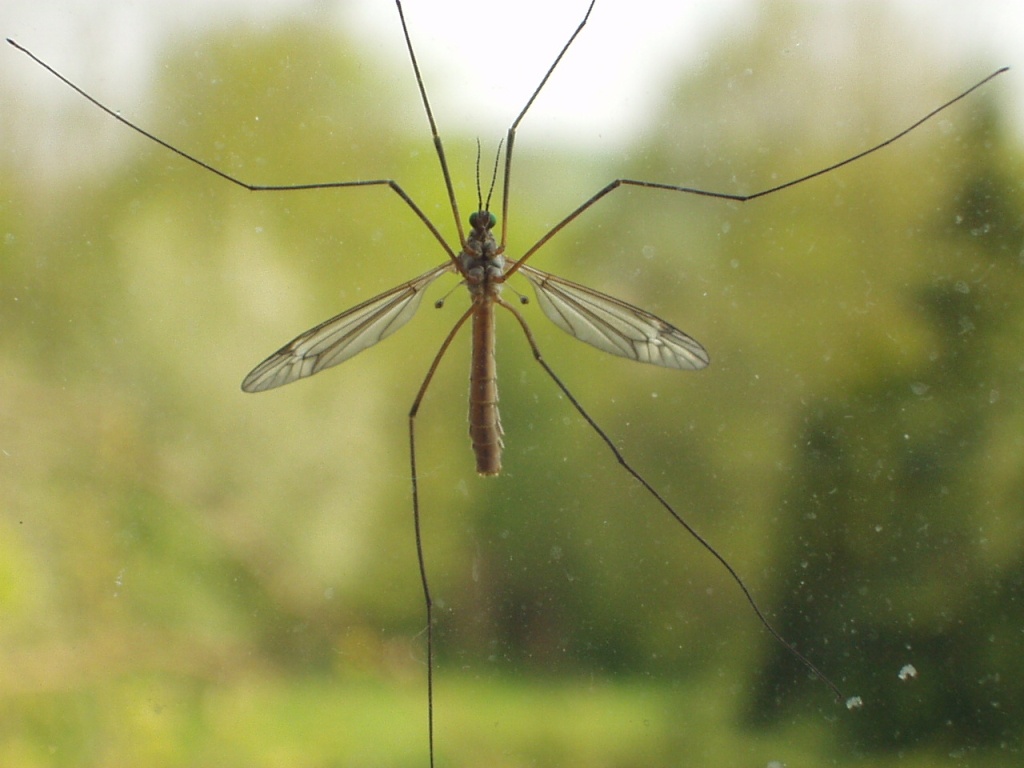
A major lawn pest in the Greater Vancouver area is the European Crane Fly, or more accurately – their larvae called leatherjackets. A native of Eurasia, the European Crane Fly will lay between 200 and 500 eggs every fall. Yikes! And the larvae that hatch are hungry!
What Do They Look Like?
These pests are harmless as adults. They look like gangly mosquitoes but they don’t bite or sting and are pretty terrible at flying. You’ll find them congregating on the sides of houses, barns, fences, window and door screens, etc. It’s their larvae, that look like grey or greenish maggots, that cause all the trouble. The larvae grow to 1.5 to 2 inches long and taper at both ends.
These hungry larvae hatch from eggs in the fall and stay in the soil during the winter. They emerge in the spring with a voracious appetite for grass. The lawn damage is typically visible in May and June.
What Conditions Do They Favour?
Leatherjackets are particular about the soil they prefer. Not too wet, not too dry and they’re happy customers. They can’t survive under water or in dry conditions. When the spring rains flood the soil, you’ll find the larvae forced to the surface where they’re easy prey for birds or they die on the asphalt.
Leatherjackets early in the spring work their way to rest on top of thatch and munch on the blades of grass. The closer to summer we get, the closer to the ground they get. Eventually, they’ll find their way back into the soil where they’ll emerge as adults in early fall. This is when you’ll find empty casings (shells) on top of the lawn. By the time they sink back into the soil, they’ve done their worst to your lawn and the damage is done.
Lawn Damage
Fist-sized brown spots will emerge in early spring. The more larvae you have the more damage will be visible. There will need to be a serious infestation to cause significant damage to your lawn. Secondary damage may be caused by birds and other predators (skunks) digging for the leatherjackets.
How Do You Get Rid Of Them?
Like any other grub-like pest, beneficial nematodes applied at the proper time are the best solution to prevent the damage. You may not see a yearly infestation. The larvae may only cause damage every two or three years. The best defense is a thick healthy lawn where the damage will be minimal and the plant can repair on its own. Most grasses are able to compensate for small amounts of root damage, but lawns that are already stressed or battling another pest or disease will be more vulnerable.
Be sure to dethatch and aerate your lawn once a year. Water deeply and let the soil dry out between waterings, rather than more frequent shallow watering. Your grass will thank you and you’ll reduce the number of larvae in your lawn also.
Our lawn care experts will work with you to develop a customized lawn care & weed control program that’s right for your lawn, your budget and your local Vancouver environment.
Contact Nutri-Lawn Vancouver now for your free, no obligation quote.






